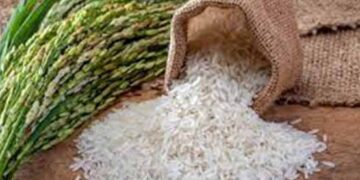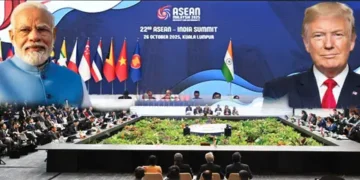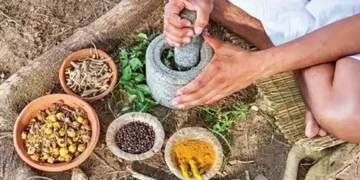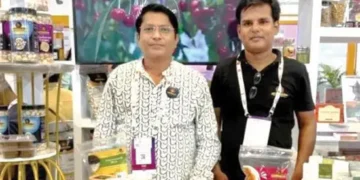Blitz Bureau
THE Government decision to extend the supply of fortified rice under all welfare schemes until December 2028 marks a significant milestone in realising Prime Minister Narendra Modi’s vision of a malnutritionfree India.
The initiative aims to provide vulnerable populations with enhanced nutrition by distributing fortified rice enriched with essential micronutrients such as iron, folic acid, and vitamin B12. The distribution will follow the standards set by the Food Safety and Standards Authority of India (FSSAI). According to the World Health Organisation’s meta-analysis, rice fortification can reduce the risk of iron deficiency by 35 per cent.
With an estimated annual outlay of Rs 2,565 crore, this initiative has the potential to avert 16.6 million Disability-Adjusted Life Years (DALYs) per year, resulting in healthcare savings equivalent to Rs 49,800 crore in GDP terms. The cost implications for the Public Distribution System (PDS) are seen as a valuable investment in improving citizens’ health.
Since the launch of the rice fortification pilot scheme in 15 states in 2020, the programme has seen significant progress. Between 2019-20 and March 31, 2024, approximately 406 lakh metric tonnes of fortified rice was distributed through the PDS, enhancing the nutritional intake of millions across the country.
Regular expansion
In February 2016, the Ministry of Women and Child Development highlighted rice fortification to combat malnutrition and anaemia, focusing on children, pregnant women, and lactating mothers. A task force by the ministry recommended mandatory rice fortification in Government programmes via FCI, with phased implementation in May 2016.
In March 2018, Niti Aayog, FCI, and the Department of Food & Public Distribution proposed fortifying rice and wheat flour for ICDS and MDM (Mid-Day Meal). FSSAI was tasked with preparing a food fortification progress report. During 2019-2022, a Centrally-sponsored pilot scheme was launched with a Rs 174.64 crore budget. By March 2022, 4.30 lakh metric tonne of fortified rice was distributed in 11 states.
In August 2021, the PM announced rice fortification in all Government welfare schemes. Next year, the Cabinet Committee on Economic Affairs approved phased national rollout and supply of fortified rice under the targeted public distribution system (TPDS) and other welfare schemes. In March this year, 100 per cent coverage of the distribution of fortified rice has been achieved, and custom-milled rice has been replaced with fortified rice under all Government schemes.
Food fortification
Fortification is the process of enriching food with essential micronutrients, such as vitamins and minerals, to improve its nutritional value. It has been used globally as a safe and effective measure to address anaemia and micronutrient malnutrition in the vulnerable population.
According to the 2008 Copenhagen Consensus, food fortification is one of the top three priorities for developing nations and plays a vital role in combating malnutrition. In India, fortification has proven successful in the past. For instance, iodized salt has significantly reduced iodine deficiency and diseases like goitre.
According to the National Family Health Survey conducted between 2019 and 2021, anaemia remains a prevalent issue in India. In addition to iron deficiency, other vitamin-mineral deficiencies such as vitamin B12 and folic acid continue to coexist and affect the health and productivity of the population. To address these challenges, the Government has undertaken significant steps, including the distribution of fortified rice.
In addition to supplying fortified rice, the Government has launched various schemes and programmes across different ministries and departments to enhance nutritional intake and promote healthy living nationwide. The major nutrition schemes are:
Nutrition schemes
POSHAN: Since 2018, Poshan Maah (Prime Minister’s Overarching Scheme for Holistic Nourishment) and Poshan Pakhwada have been held across the country, enhancing nutrition outcomes for children, pregnant women, and lactating mothers. These events aim to raise awareness about nutrition and healthy eating.
PMMVY: The Pradhan Mantri Matru Vandana Yojana is a Centrally-sponsored scheme that provides financial support to pregnant women and lactating mothers. It aims to compensate for wage loss and encourage proper nutrition. ICDS: Launched on October 2, 1975 the Integrated Child Development Services include Anganwadi services and the scheme for adolescent girls to provide supplementary nutrition to beneficiaries.
PM POSHAN: Formerly known as the Mid-Day Meal Scheme, the Pradhan Mantri Poshan Shakti Nirman (PM POSHAN) aims to enhance the nutritional status of school children, thereby supporting their physical and cognitive development. The Prime Minister has approved the continuation of the scheme for a five-year period, from 2021-22 to 2025-26.
PMGKAY: The Pradhan Mantri Garib Kalyan Anna Yojana was introduced to help alleviate the difficulties faced by the poor and needy due to the economic disruptions caused by the Covid-19 pandemic. This initiative aims to provide free foodgrain to around 81.35 crore beneficiaries.
SDG2 intervention As nations strive to achieve Sustainable Development Goal 2 of ending malnutrition in all its forms, India’s rice fortification programme is one of the most effective complementary interventions to tackle nutritional anaemia. By fortifying the rice provided through these programmes, the Government aims to support the nutritional needs of the underprivileged, fostering a stronger, healthier India.
































